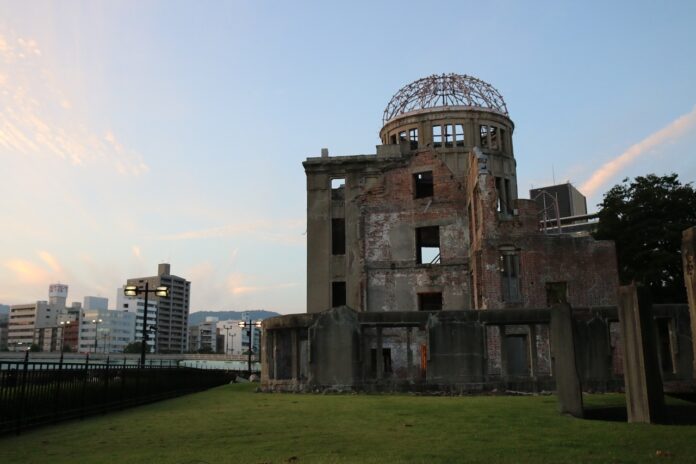In the waning days of World War II, the world was witnessing an unparalleled level of destruction and loss. The Allies had successfully pushed back Axis powers in Europe, leading to the unconditional surrender of Nazi Germany in May 1945. However, the war in the Pacific theater continued unabated, with Japan refusing to surrender despite facing overwhelming odds.
The Manhattan Project
Amidst this backdrop, a secret project was unfolding on American soil – the Manhattan Project. This top-secret endeavor, led by some of the brightest scientific minds of the time, aimed to harness the power of atomic energy to create a new, devastating weapon. After years of intense research and development, the first successful test of an atomic bomb, known as the Trinity Test, took place on July 16, 1945, in the deserts of New Mexico. The explosion was unlike anything ever seen before, signaling a new era in warfare and global politics.
The Potsdam Conference
While the bomb was being developed, the Allies held the Potsdam Conference in Germany from July 17 to August 2, 1945. President Harry S. Truman, who had taken office following President Franklin D. Roosevelt’s death in April 1945, was informed of the successful test during the conference. The leaders of the United States, the United Kingdom, and the Soviet Union discussed the post-war order, but an urgent topic was Japan’s continued resistance.
President Truman, after consulting with his advisors, decided to issue the Potsdam Declaration on July 26, 1945. The declaration called for Japan’s unconditional surrender, warning of “prompt and utter destruction” if they refused. Japan did not heed the warning, and the decision was made to use the atomic bomb in an attempt to force a swift end to the war and avoid a potentially costly invasion of the Japanese mainland.
Hiroshima: The First Target
The target list for the atomic bomb had been carefully selected. Hiroshima, a city of significant military importance, was chosen as the first target. It housed the headquarters of the Second General Army and the Fifth Division, making it a key logistical hub for Japan’s war efforts. Additionally, the city had not been heavily bombed during previous air raids, making it an ideal location to demonstrate the bomb’s power.
On the morning of August 6, 1945, the B-29 bomber Enola Gay, piloted by Colonel Paul W. Tibbets, took off from Tinian Island. At 8:15 a.m. local time, the bomb, codenamed “Little Boy,” was dropped over Hiroshima. Within moments, the city was engulfed in a blinding flash of light, followed by a massive explosion and a mushroom cloud that rose high into the sky. The immediate impact was catastrophic, with tens of thousands of people killed instantly and many more suffering from severe injuries and radiation exposure.
The Aftermath
The devastation in Hiroshima was beyond comprehension. Buildings were flattened, and fires raged uncontrollably. The sheer force of the explosion vaporized those closest to the epicenter, leaving only shadows imprinted on the ground. Those who survived the initial blast faced horrific burns, radiation sickness, and long-term health issues. Despite the unprecedented destruction, Japan did not immediately surrender.
Nagasaki: The Second Bomb
On August 9, 1945, a second atomic bomb, codenamed “Fat Man,” was dropped on Nagasaki, another city of military and industrial significance. The bomb caused similar devastation, killing tens of thousands more and compounding the horror of the previous attack. The cumulative effect of the two bombings, combined with the Soviet Union’s declaration of war against Japan and subsequent invasion of Japanese-held territories, finally compelled Japan to surrender.
The End of World War II
On August 15, 1945, Emperor Hirohito announced Japan’s unconditional surrender in a radio broadcast, marking the end of World War II. The formal surrender took place on September 2, 1945, aboard the USS Missouri in Tokyo Bay. The use of atomic bombs on Hiroshima and Nagasaki remains one of the most controversial decisions in military history, raising ethical and moral questions that continue to be debated to this day.
Legacy and Reflection
The bombings of Hiroshima and Nagasaki ushered in the nuclear age, profoundly shaping international relations and the future of warfare. The immense human cost and the long-lasting impact of radiation exposure served as stark reminders of the devastating power of nuclear weapons. In the years that followed, efforts to prevent the proliferation of such weapons led to numerous treaties and international agreements aimed at ensuring global security.
The story of Hiroshima and Nagasaki is a sobering testament to the destructive potential of humanity, underscoring the importance of striving for peace and understanding in a world forever changed by the events of August 1945.
